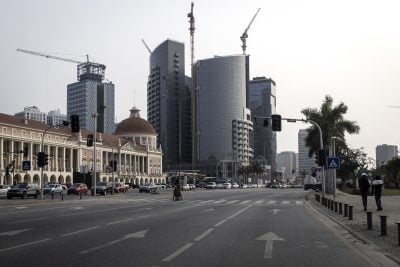Some improvement has been seen in the local sector. In 2010, African Leather Industries – a joint venture between Leather Industries of Kenya (LIK) and the Wellness Footwear, an affiliate of Gulf Wear – set up a manufacturing plant in Thika, where it produces 3,000 soles a day.
And in September 2014, newest market entrant, Zingo Investments, will manufacture its first batch of 2,000 shoes in Thika, joining leather product manufacturing giants Bata and LIK. However the upturn is yet to reflect on the national budget.
In the 2014 Economic Survey, leather and related products subsector grew by only 0.3% in 2013 compared to the manufacture of shoes with uppers of plastic and rubber which recorded a growth of 13.6%. Production of finished leather and shoes with uppers of leather dropped marginally by 0.4% and 0.2% during the year.
And so while the industry contributes an estimated 4% to agricultural GDP, with earnings by local dealers estimated at Sh1.8bn ($20m) annually, the sector has the potential to contribute nearly 630m in a year, according to Mohamed.
Value addition
Kenya’s abundance of livestock is a natural strength for the sector. The country has 17.5m cattle, 17.1m sheep, 27.7m goats and 3m camels according to Kenya’s Leather Development Council making it a lucrative investment avenue. In addition, Kenya has successfully begun processing fish-skin leather from Nile perch, ostriches and farmed crocodiles, according to the Kenya Industrial Research and Development Institute.
The growth of the leather industry sector can also positively impact rural development, employment and wealth creation since the country’s arid and semi-arid lands contribute most of the slaughter stock and the sector is relatively drought resistant; when it rains livestock is well fed, and when it does not, their hides are useful.
However, optimal growth depends on value addition which, until recently, has been minimal. Most of Kenya’s exports have been in the form of unprocessed, raw hides and skins. Of Kenya’s current exports, 95% are semifinished leather – known as wet blue – deny the country the opportunity to earn better returns.
Processing hides and skins to finished leather and leather products fetches a value addition of up to 1,000%, said Mohamed, and he insists that if this critical step can be addressed, Kenya has the potential to join the global supply chain for high-quality leather products.
A second key challenge has been low production capacity at the grass-roots level, which has resulted in an 85% loss of raw skins due to damage or poor handling during slaughter.
In May, Kenya’s Livestock and Fisheries department said the country could annually earn $46m-$68m more than the current $114m from exports of semi-processed hides if better technology was used. CS Mohamed has said his ministry will begin an engagement program with county governments geared at encouraging the establishment of modern abattoirs and regional tanneries.
Regional snapshot
In spite of these challenges, Kenya has a strong chance to become the regional leather hub, and benefit from the $77.5bn global market for leather, simply because the challenges its neighbours face are greater.
Tanzania is better positioned since in terms of hides and skin it ranks second in the region after Ethiopia and third in Africa. But more than 50,000 pieces of hides are smuggled out of Tanzania every month, and nearly all its tanneries have shelved production due to insufficient raw materials, denying the government about $264,000 in export levies. Uganda too has attempted to corral its leather industry.
Of the 25m pairs of shows that Uganda buys, only one million are produced locally and it is actively courting investors from India – the second-largest leather exporter globally. It has also increased its tanneries from five to seven, and introduced a 20% export levy to protect the nascent industry.
But CS Mohamed’s directives are a strong step in a strategy designed to see Kenya diversify exports away from the highly volatile cash crops of tea and coffee, and the advent of mega government policy Vision 2030 will undoubtedly hasten the pace of his plans. The success of his journey, however, may come down to how comfortable his leather shoes are for the long journey ahead.
Want to continue reading? Subscribe today.
You've read all your free articles for this month! Subscribe now to enjoy full access to our content.
Digital Monthly
£8.00 / month
Receive full unlimited access to our articles, opinions, podcasts and more.
Digital Yearly
£70.00 / year
Our best value offer - save £26 and gain access to all of our digital content for an entire year!
 Sign in with Google
Sign in with Google 


